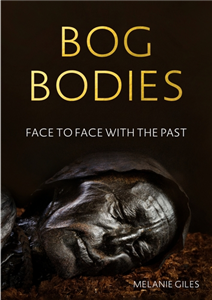Description
More Information
Rights Information
Albania, Algeria, Angola, Argentina, Armenia, Australia, Austria, Bahrain, Belgium, Belize, Benin, Bolivia, Bosnia and Herzegovina, Botswana, Brazil, Bulgaria, Burkina Faso, Burundi, Cameroon, Canada, Cape Verde, Central African Republic, Chad, Chile, China, Colombia, Comoros, Congo [DRC], Congo, Republic of the, Costa Rica, Ivory Coast, Croatia, Czech Republic, Denmark, Djibouti, Ecuador, Egypt, El Salvador, Equatorial Guinea, Eritrea, Estonia, Ethiopia, Faroe Islands, Finland, France, French Guiana, Gabon, Gambia, Georgia, Germany, Ghana, Greece, Guatemala, Guinea, Guinea-Bissau, Guyana, Honduras, Hongkong, Hungary, Iceland, India, Indonesia, Iran, Iraq, Ireland, Israel, Italy, Japan, Jordan, Kazakhstan, Kenya, Kuwait, Latvia, Lebanon, Lesotho, Liberia, Libya, Lithuania, Luxembourg, Macau, China, Macedonia [FYROM], Madagascar, Malawi, Malaysia, Mali, Malta, Mauritania, Mauritius, Mayotte, Mexico, Mongolia, Montenegro, Morocco, Mozambique, Namibia, Netherlands, New Zealand, Nicaragua, Niger, Nigeria, Norway, Oman, Pakistan, Panama, Paraguay, Peru, Philippines, Poland, Portugal, Puerto Rico, Qatar, Reunion, Romania, Russia, Rwanda, Saint Helena, Sao Tome and Principe, Saudi Arabia, Senegal, Serbia, Seychelles, Sierra Leone, Singapore, Slovakia, Slovenia, Somalia, South Africa, South Korea, Spain, Sri Lanka, Sudan, Suriname, Swaziland, Sweden, Switzerland, Syria, Taiwan, Tanzania, Thailand, Timor-Leste, Togo, Tokelau, Tunisia, Turkey, Uganda, Ukraine, United Arab Emirates, United Kingdom, United States, Uruguay, Venezuela, Vietnam, Western Sahara, Yemen, Zambia, Zimbabwe, South Sudan, Cyprus, Palestine, Bangladesh, Cambodia, Liechtenstein, Azerbaijan
Endorsements
The 'bog bodies' of north-western Europe have captured the imaginations of poets and archaeologists alike, allowing us to come face to face with individuals from the past. Their exceptional preservation makes it possible to examine minute details of their lives and deaths, making us reflect poignantly on our own mortality. In this book, Melanie Giles advances discussion of these bodies by arguing that they must be situated within a turbulent world of endemic violence and change. Reinterpreting the latest continental research and new discoveries, she brings the bogs to life through both natural history and folklore, revealing them as places that were rich and fertile yet dangerous. At the heart of the book is a ground-breaking 'cold case' forensic study of Worsley Man, Manchester Museum's 'bog head', which dates from the early Roman period of military occupation in the north. A victim of dramatic facial injury, garrotting and decapitation, Worsley Man provides the basis for a rich regional portrait that reinvigorates and changes the nature of bog body studies at an international level. Giles also argues that these remains do not pose just practical conservation problems but also philosophical dilemmas, compounded by the critical debate on if - and how - they should be displayed. She thus presents for the first time the complete cycle of archaeological engagement: from discovery to conservation and analysis, interpretation, display and the cultural and creative legacy of the ancient dead.
Reviews
The 'bog bodies' of north-western Europe have captured the imaginations of poets and archaeologists alike, allowing us to come face to face with individuals from the past. Their exceptional preservation makes it possible to examine minute details of their lives and deaths, making us reflect poignantly on our own mortality. In this book, Melanie Giles advances discussion of these bodies by arguing that they must be situated within a turbulent world of endemic violence and change. Reinterpreting the latest continental research and new discoveries, she brings the bogs to life through both natural history and folklore, revealing them as places that were rich and fertile yet dangerous. At the heart of the book is a ground-breaking 'cold case' forensic study of Worsley Man, Manchester Museum's 'bog head', which dates from the early Roman period of military occupation in the north. A victim of dramatic facial injury, garrotting and decapitation, Worsley Man provides the basis for a rich regional portrait that reinvigorates and changes the nature of bog body studies at an international level. Giles also argues that these remains do not pose just practical conservation problems but also philosophical dilemmas, compounded by the critical debate on if - and how - they should be displayed. She thus presents for the first time the complete cycle of archaeological engagement: from discovery to conservation and analysis, interpretation, display and the cultural and creative legacy of the ancient dead.
Author Biography
Melanie Giles is Senior Lecturer in Archaeology at the University of Manchester
Manchester University Press
Manchester University Press is a leading UK publisher known for excellent research in the humanities and social sciences.
View all titlesBibliographic Information
- Publisher Manchester University Press
- Publication Date December 2020
- Orginal LanguageEnglish
- ISBN/Identifier 9781526150189 / 1526150182
- Publication Country or regionUnited Kingdom
- FormatPrint PDF
- Pages328
- ReadershipGeneral/trade; College/higher education; Professional and scholarly
- Publish StatusPublished
- Dimensions240 X 170 mm
- Biblio NotesDerived from Proprietary 5197
- Reference Code13132
Manchester University Press has chosen to review this offer before it proceeds.
You will receive an email update that will bring you back to complete the process.
You can also check the status in the My Offers area

Please wait while the payment is being prepared.
Do not close this window.



